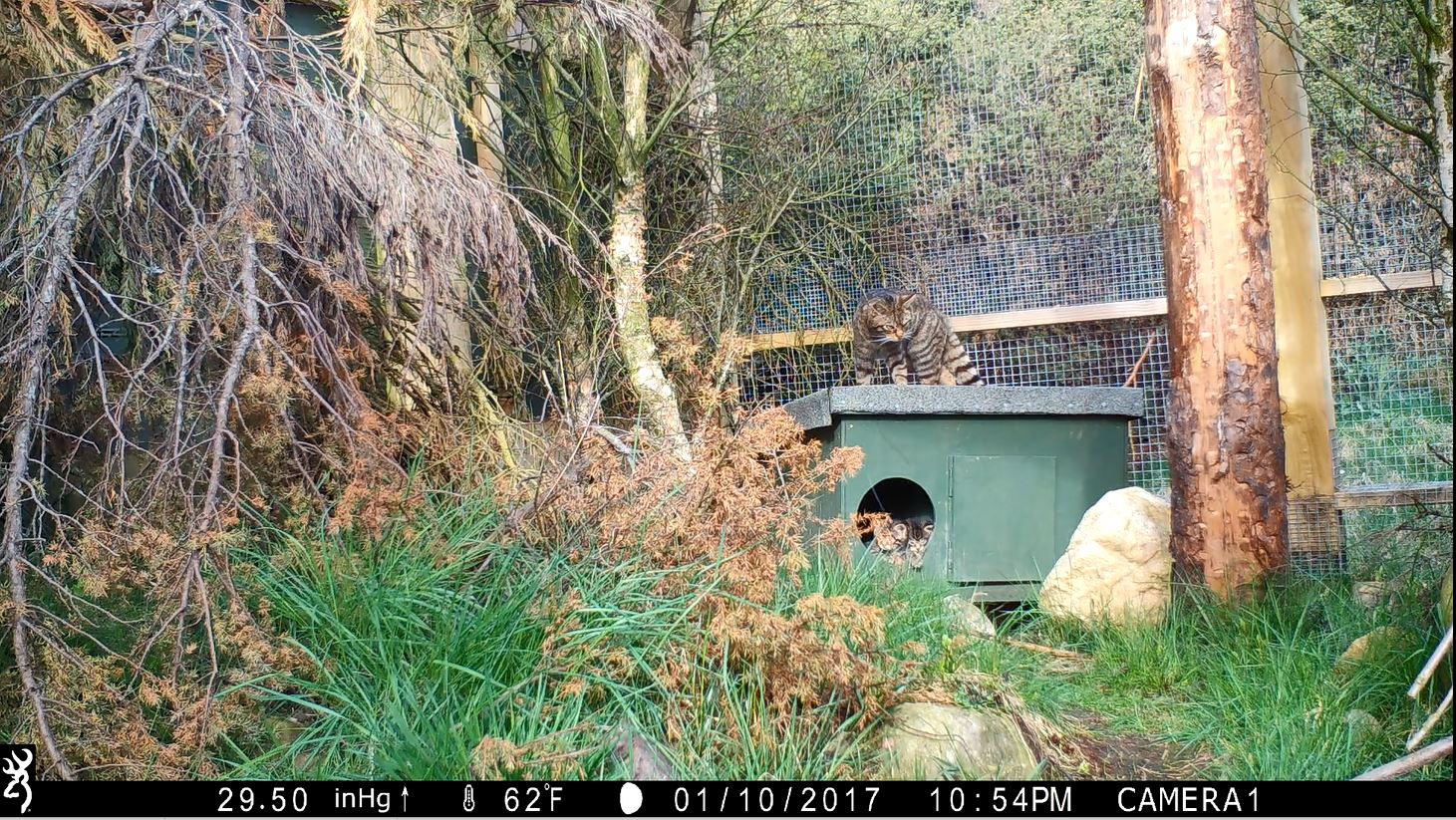First wildcat kittens born at Saving Wildcats conservation breeding for release centre
Wildcat kittens, which will likely be among the first of their species to be released into the wild in Britain, have been born in the Saving Wildcats conservation breeding for release centre at the Royal Zoological Society of Scotland’s Highland Wildlife Park.
After 16 wildcats were paired up earlier this year, the European partnership project has welcomed eight kittens in three litters so far and the Saving Wildcats team is hopeful for more births over the coming weeks.
Led by the Royal Zoological Society of Scotland (RZSS), Saving Wildcats is working with national and international experts to restore Scotland’s critically endangered wildcat population by breeding and releasing them into carefully selected locations in the Cairngorms National Park.
David Barclay, Saving Wildcats conservation manager, said “Put simply, these kittens are the future of wildcats in Scotland. Decades of extensive research have shown their species is highly likely to go extinct in Britain if we do not carry out releases to restore our critically endangered wildcat population.
“It is still early days for our new wildcat kittens who are very vulnerable in their first weeks and months. They have a lot to learn over the next year, but our expert Saving Wildcats keepers will be on hand to help prepare them for the many challenges of life in the wild.
“We have a very hands-off approach with the cats to give them the best possible chance of survival after release. This means we are only able to monitor the kittens on remote cameras at the moment, though we have been able to confirm there are at least eight kittens from three litters so far and hope there will be more to follow in the coming weeks.”
Three of the kittens have been born to mum Droma, who supporters can sponsor to help secure a future for Scotland’s wildcats at savingwildcats.org.uk/sponsor.
Caol Ila, who came to the Saving Wildcats centre from the Royal Zoological Society of Scotland’s Edinburgh Zoo, also had three kittens and two more were born to Torr, who was previously living at Merklands Wood.
Dr Helen Senn, head of conservation and science at RZSS, said, “Wildcats are Scotland's most iconic animal but sadly also one of our most endangered. Habitat loss, hunting and inter-breeding with domestic cats have all taken their toll, leaving this incredible species on the brink of extinction.
“Fortunately, our Saving Wildcats team, partners and many other wonderful supporters are working together to restore wildcats in the Highlands. Planning is underway for the first releases in 2023, which will be subject to receiving a translocation license.
“This enormously collaborative effort includes our dedicated keepers caring for the cats in the centre, the field team carefully assessing the suitability of potential release sites, and national and international experts sharing best practice and their experience of breeding a whole range of species for release in conservation projects across the globe.”
Sarah Henshall, Head of Conservation at the Cairngorms National Park Authority, said, “We’re extremely proud to be part of this ground-breaking conservation project, taking place right here in the Cairngorms National Park. The Cairngorms is home to over 25% of the UK’s rare and endangered species, and the arrival of the first wildcat kittens at the Saving Wildcats centre is a significant milestone in our collective efforts to save this critically endangered species from extinction in Britain.
“Scotland’s wildcats have been identified as a priority species in our five-year Cairngorms Nature Action Plan and this project is helping ensure the ‘Highland tiger’ remains a feature of the Scottish landscape for generations to come.”
Saving Wildcats (#SWAforLIFE) is led by the Royal Zoological Society of Scotland in collaboration with NatureScot, Forestry and Land Scotland, The Cairngorms National Park Authority, Norden’s Ark and Consejería de Medio Ambiente y Ordenación del Territorio de la Junta de Andalucía.
The six-year project is funded with the contribution of the LIFE Programme of the European Union and the generous support of the Garfield Weston Foundation, The National Trust for Scotland, The People’s Trust for Endangered Species and The European Nature Trust.

